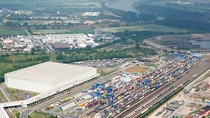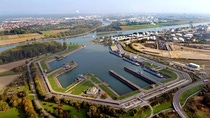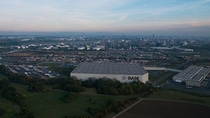Ludwigshafen
Cleverly interconnected: The Logistics Verbund
Even when it came to choosing a site location, the issue of possible transport options for incoming raw materials and outgoing BASF products was extremely important. The rail connection, which already existed at the time, and the location by the River Rhine favored the choice of the site in Ludwigshafen for the plant.
Today the network of track at BASF covers more than 230 kilometers. Around 30 percent of goods are moved by rail, with the same percentage transported by truck and around 40 percent moved by ship. Large quantities of raw materials and feedstocks are supplied by pipeline or ship and get to the production facilities via three ports, two tank farms and a vast pipeline network. “Short distances” is the maxim for the internal movements of goods by truck and rail. They are coordinated with one another via a control system so that the distances are kept short and there are no empty vehicle movements. Rail plays a major role as an environmentally friendly means of transport. The intermodal transport terminal in the north of the plant makes Ludwigshafen an important hub for intermodal transport in Europe.
Block trains save energy and costs
Railroad is also used to link the site to BASF’s other important sites. What are known as block trains travel between Ludwigshafen and Schwarzheide and between Ludwigshafen and Antwerp several times a week. These goods trains travel from their station of origin to their destination without stopping anywhere in between. This saves energy and, in comparison to transport by road, avoids, CO2 emissions.
There are also synergy effects with truck movements and overseas shipments. They are organized centrally. This ensures that only fully laden trucks travel to the destinations and containers are filled to the optimum level. The Verbund is also beneficial when it comes to storage and bottling. A large number of production facilities have their products bottled and packaged centrally.


